Are you a tenant facing issues in your rental property that need immediate attention? Writing a well-structured repair request letter can make all the difference in getting the necessary repairs done promptly. In this article, we'll guide you through the process of crafting a clear and concise letter to your landlord, ensuring your concerns are heard and addressed efficiently. So, let's dive in and discover how to effectively communicate your repair needs!

Clear description of the repair issue.
The leaking faucet in the kitchen, specifically the single-handle pull-down sprayer, continuously drips water (approximately three drops per minute), resulting in water waste and increased utility bills. The leak appears to be coming from the base of the faucet, which may indicate a worn-out washer or cartridge issue requiring replacement. The faucet model, Delta 9113-AR-DST, is known for its durability, yet this maintenance is becoming urgent as it causes water pooling on the counter and hinders the overall functionality of the kitchen workspace. Immediate attention to this repair is necessary to prevent further water damage and ensure proper kitchen operations.
Specific location of the problem within the premises.
In the northeast corner of the living room, near the window, a substantial water leak has developed, originating from the ceiling (above apartment 3A). This leak has resulted in noticeable water stains spreading across the drywall, creating a risk of mold growth, especially with humidity levels reaching 70% during the summer months. The source of the problem appears to be a broken pipe within the upper unit's plumbing system, potentially exacerbated by recent heavy rainfall (over 3 inches recorded last week), which has placed additional stress on the existing infrastructure. Immediate attention is necessary to prevent further damage and ensure the safety of the living environment.
Urgency and potential impact on living conditions.
A tenant repair request can highlight the urgency and potential impact of needed repairs on living conditions, such as a broken heating system during winter months. Failure to address a malfunctioning heater can lead to indoor temperatures dropping below 10 degrees Celsius (50 degrees Fahrenheit), posing health risks like hypothermia or exacerbating respiratory issues. Water leaks from broken plumbing fixtures can lead to mold growth within 24-48 hours, creating unsanitary living conditions. Electrical issues presenting themselves through flickering lights may indicate wiring problems that could cause power outages or even fire hazards. Timely repairs not only ensure safety but also maintain tenant comfort and property value.
Required access and preferred repair times.
A tenant repair request involves scheduling access to the property for necessary maintenance and repairs. Typical access times may include weekdays from 9 AM to 5 PM for convenience. Specific repairs, such as plumbing issues (potentially involving leaks or clogs), electrical problems (like faulty wiring or broken fixtures), or HVAC malfunctions (affecting heating and cooling systems), should be detailed for the repair technician. Providing at least two to three preferred time slots ensures timely responses and efficient scheduling. Clear communication regarding access instructions (such as key arrangements or entry codes) is vital for smooth operation during the repair process.
Contact information and preferred communication method.
In residential properties, tenants often require repairs to be addressed by management promptly. Clear communication is crucial in these situations. Tenants should provide their essential contact information, including email address (e.g., example@domain.com) and phone number (e.g., 555-1234), ensuring accurate identification. Preferred communication methods, such as emails or text messages, should be specified, outlining availability for quick responses. Describing the repair needed, such as a leaky faucet in a kitchen located in apartment 4B, enhances clarity. Addressing the urgency of the request, for instance, if the issue poses a risk of water damage, informs management of the repair's timeframe, emphasizing the importance of timely responses in maintaining tenant satisfaction and property value.

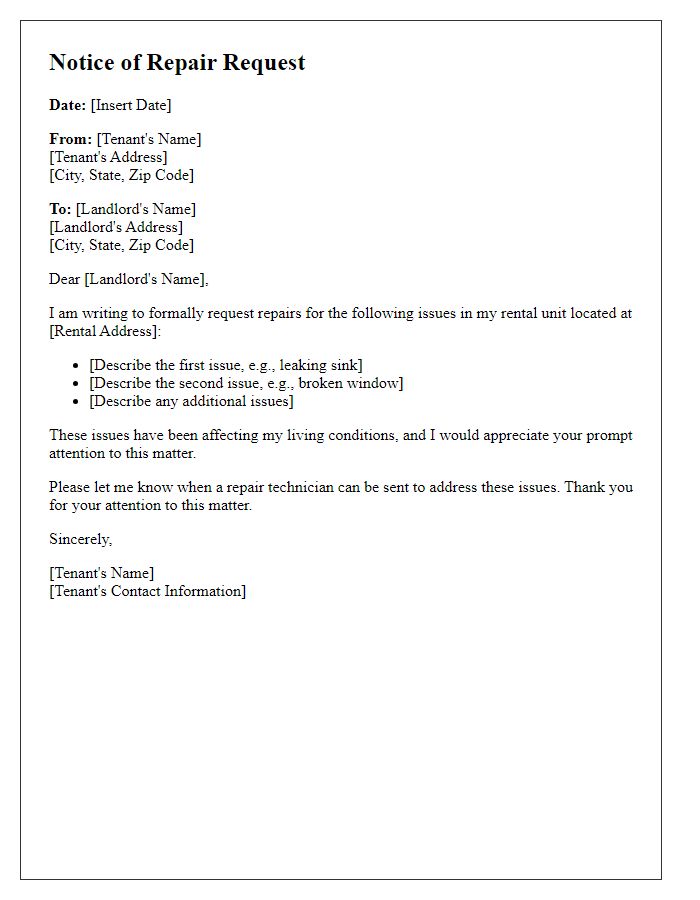
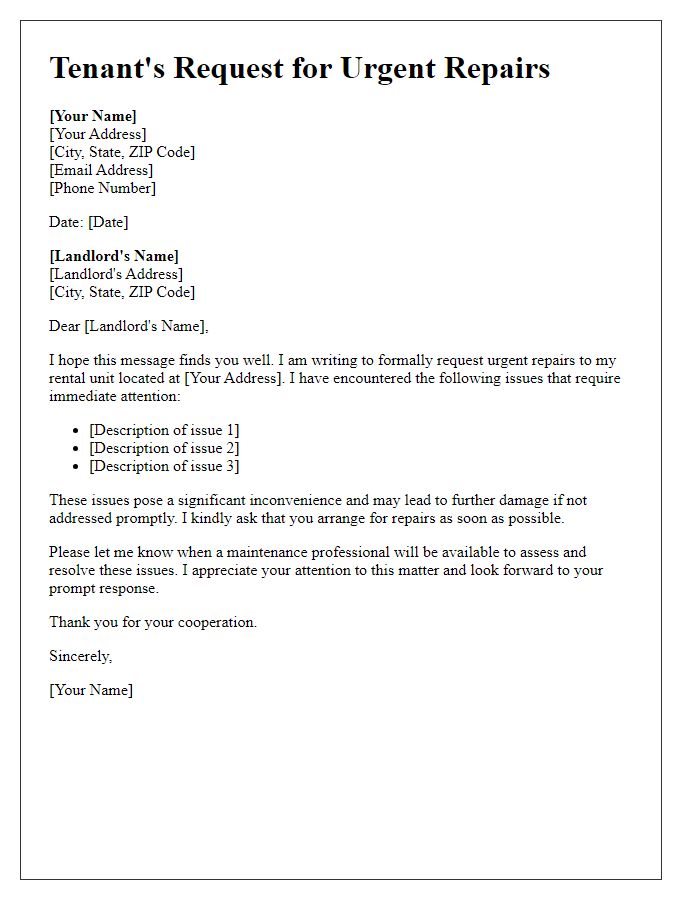
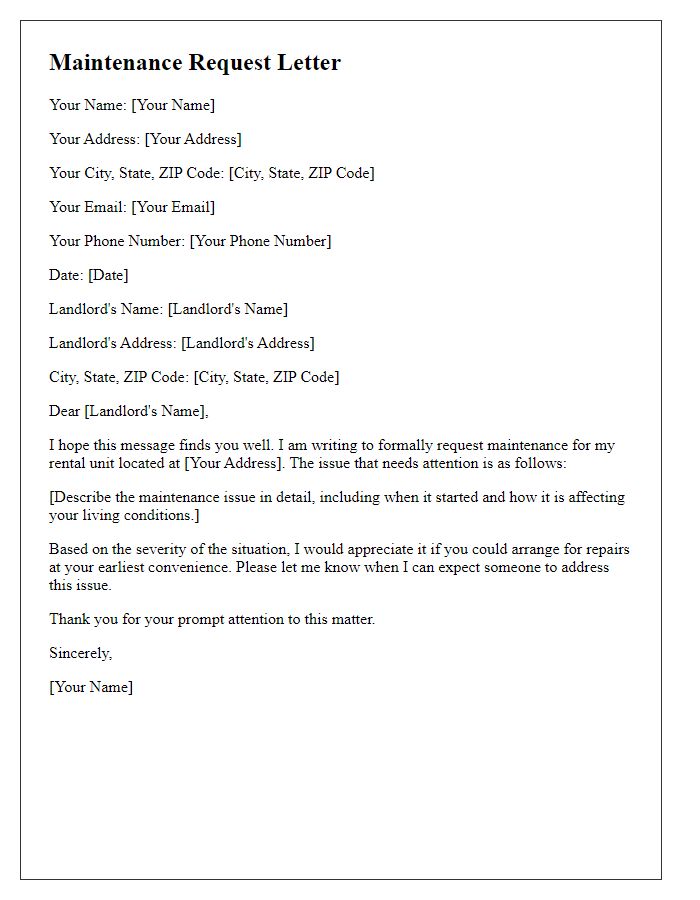
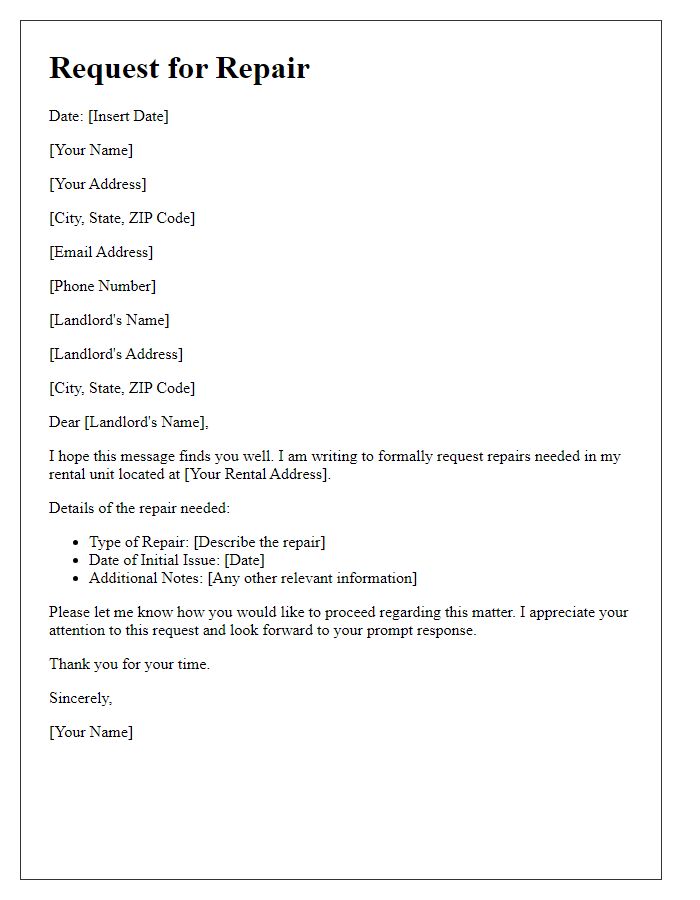
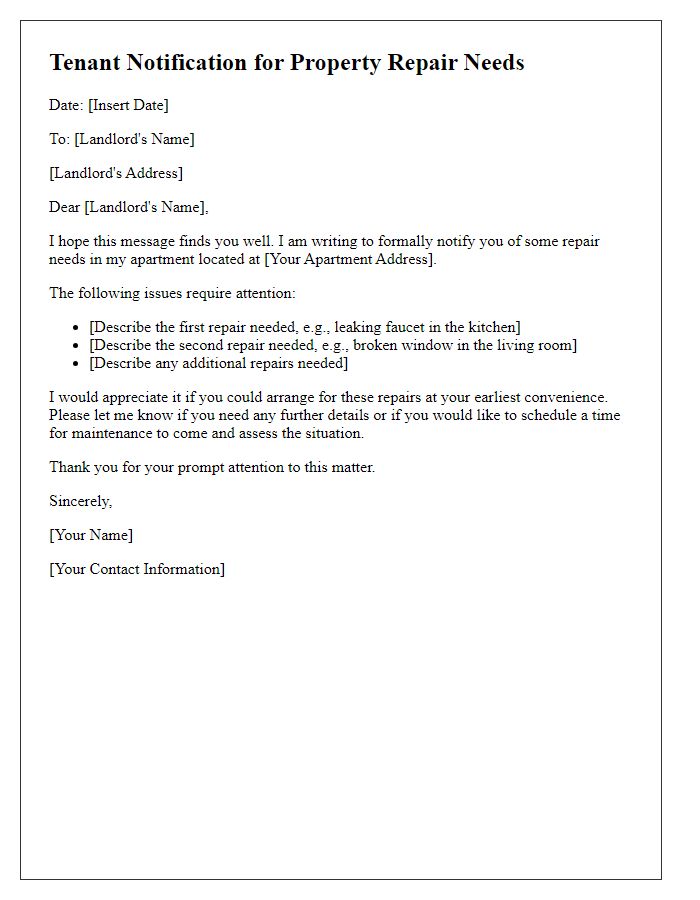
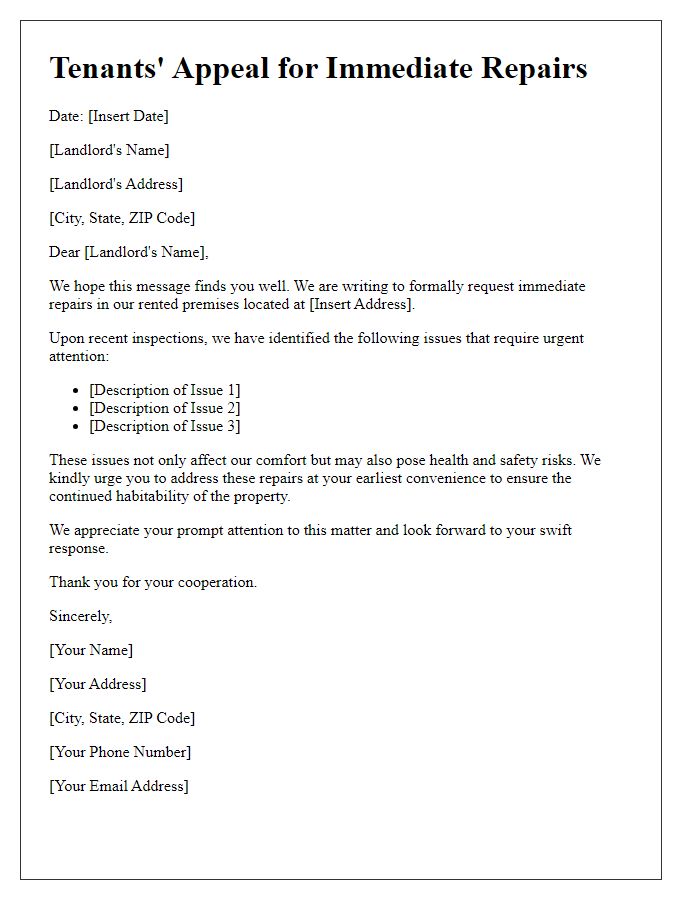
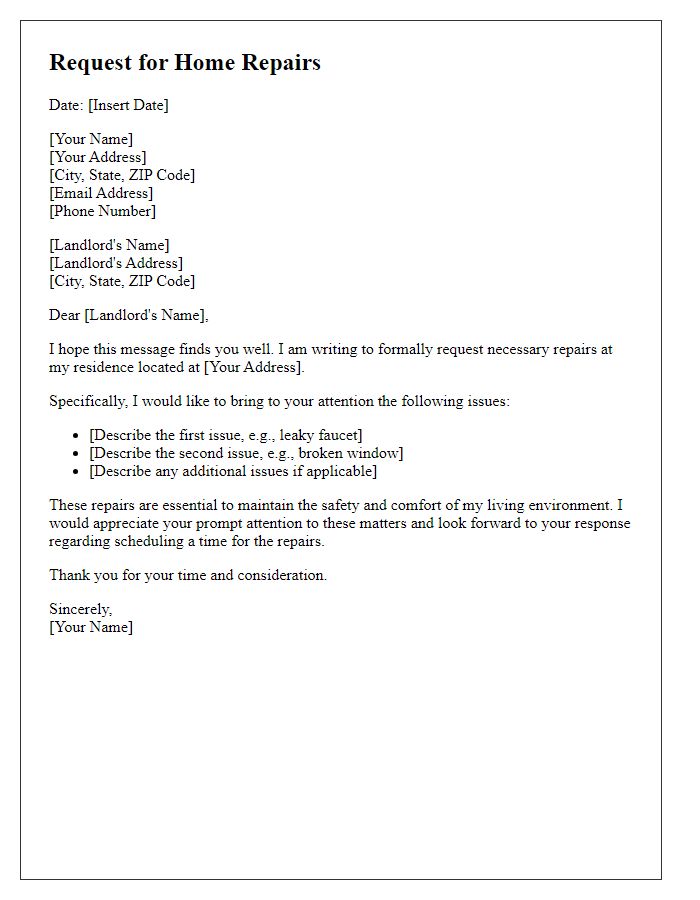
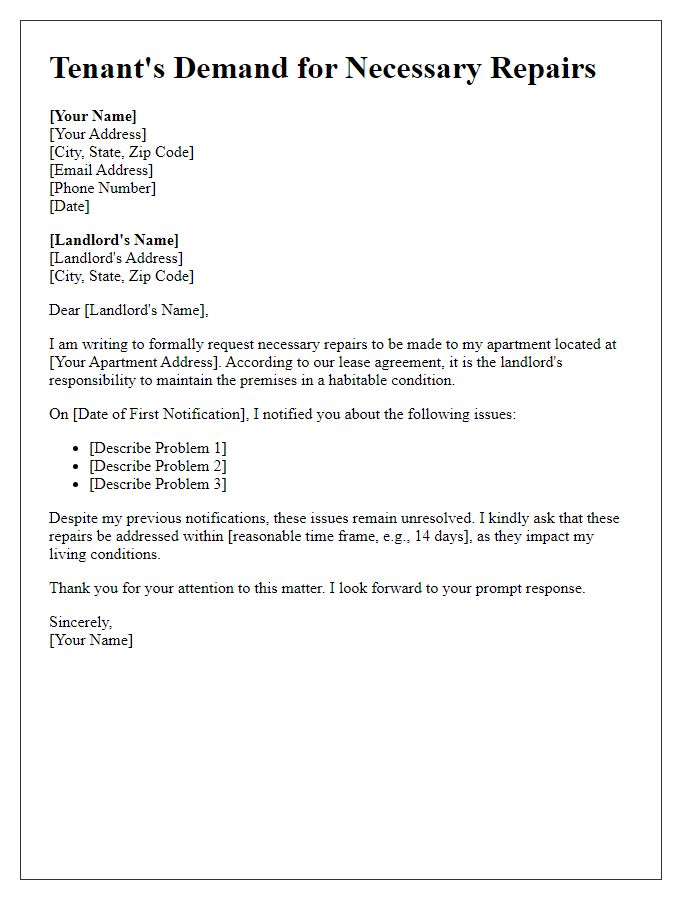
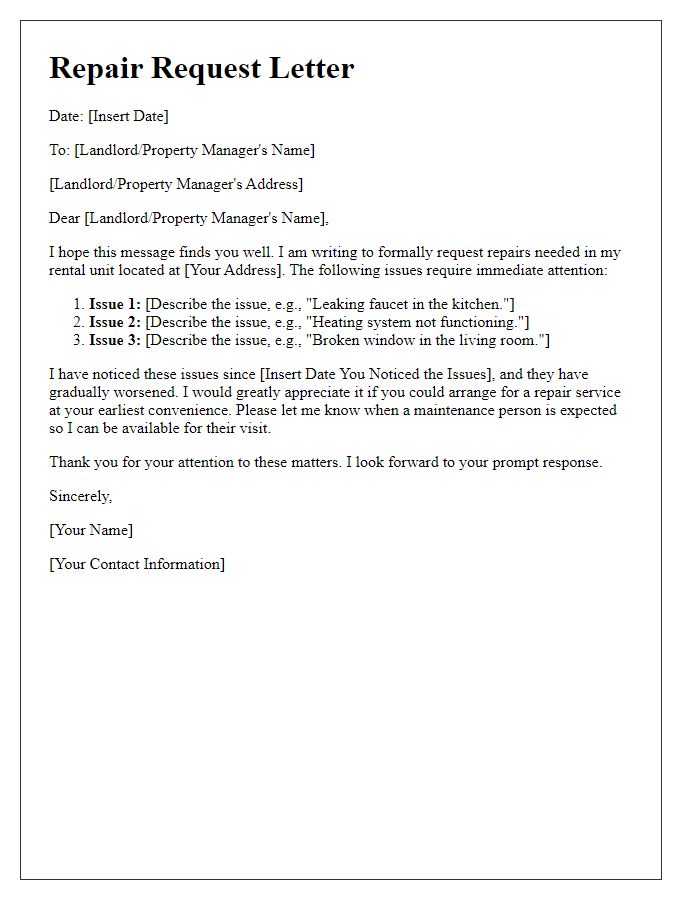
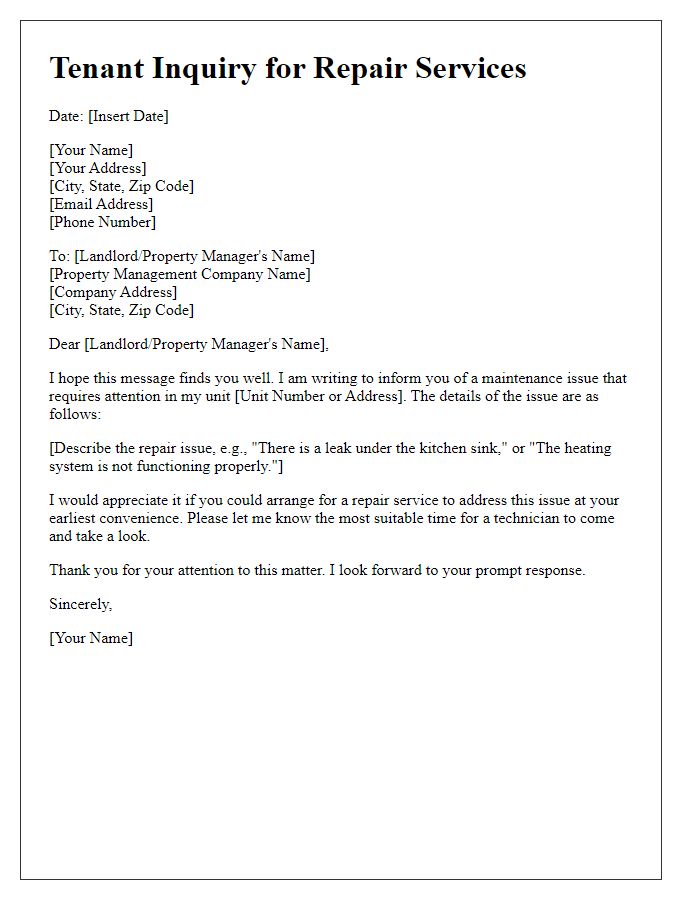


Comments